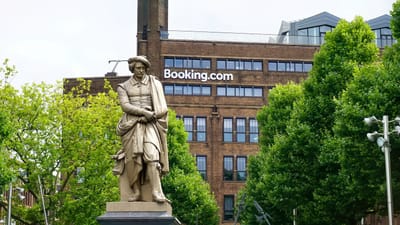Seasonal Strategies: Adapting Your Booking System for Peak and Off-Peak Periods
Seasonal fluctuations can significantly impact businesses that rely on bookings. To thrive year-round, it's crucial to adapt your booking system to accommodate both peak and off-peak periods. This comprehensive guide explores strategies to optimize your booking system for different seasons, ensuring maximum efficiency and profitability. We'll delve into the importance of adjusting availability, implementing dynamic pricing models, and creating targeted promotions tailored to specific time periods. By mastering these seasonal strategies, you'll be better equipped to manage demand, increase revenue during busy times, and stimulate bookings during slower periods. Whether you're in hospitality, tourism, or any service-based industry, these insights will help you navigate the challenges and opportunities that come with seasonal variations in demand.Table of Contents:

Understanding Seasonal Patterns
Before implementing any changes to your booking system, it's essential to analyze your historical data and identify seasonal patterns. Look for trends in booking volumes, popular services, and customer behavior across different times of the year. This information will serve as the foundation for your seasonal strategies.Consider factors such as holidays, local events, weather conditions, and industry-specific cycles that may influence demand. By understanding these patterns, you can anticipate busy and slow periods, allowing you to plan and adjust your booking system accordingly. This proactive approach will help you maximize opportunities during peak seasons and mitigate the impact of off-peak periods.
Do you need a website? Want to build a website but don't know where to start? Our website builder is the perfect solution. Easy to use, and with the ability to customize to fit your business needs, you can have a professional website in no time.
Adjusting Availability for Peak Periods
During peak seasons, demand for your services is likely to be high. To capitalize on this increased interest, consider expanding your availability. This might involve extending operating hours, increasing staff, or offering additional time slots for bookings.Implement an overbooking strategy with caution. While it can help maximize capacity, it's crucial to balance this with the risk of disappointing customers. Use historical data to determine a safe overbooking threshold that accounts for typical cancellation rates.
Consider implementing a waitlist feature in your booking system. This allows you to capture potential customers even when you're fully booked, and gives you the flexibility to accommodate last-minute cancellations or expand capacity if possible.
Managing Availability During Off-Peak Periods
During slower seasons, it's important to optimize your resources while maintaining service quality. Consider adjusting your availability to match reduced demand. This might involve reducing operating hours or consolidating bookings to specific days or time slots.Use this time to schedule staff training, perform maintenance, or plan improvements to your services. Communicate any changes in availability clearly to your customers through your booking system and other channels.
Despite reduced demand, ensure that you maintain a consistent presence and responsiveness. Even during off-peak periods, potential customers should be able to easily book your services for future dates.
Building a website with SITE123 is easy
Implementing Seasonal Pricing Strategies
Dynamic pricing is a powerful tool for managing demand across seasons. During peak periods, consider implementing higher rates to reflect increased demand and maximize revenue. Conversely, offer more competitive prices during off-peak seasons to stimulate bookings.Develop a tiered pricing system that reflects different levels of demand throughout the year. This could include categories such as 'high season', 'shoulder season', and 'low season' rates. Ensure that your booking system can easily accommodate these different price points and automatically apply them based on the selected dates.
Consider offering early bird discounts for bookings made well in advance, especially for peak periods. This can help secure bookings early and improve your cash flow. Similarly, implement last-minute deals during off-peak periods to fill any remaining slots.
Creating Targeted Promotions
Develop seasonal promotions that align with your identified peak and off-peak periods. For busy seasons, focus on promotions that encourage early bookings or upsells to premium services. During slower periods, create packages or bundle deals to increase the perceived value and stimulate demand.Use your booking system to implement and track these promotions. Set up promotional codes that can be easily applied at checkout, and ensure that your system can handle multiple concurrent promotions if necessary.
Leverage email marketing integration with your booking system to send targeted promotional offers to your customer base. Segment your audience based on their booking history and preferences to ensure that promotions are relevant and compelling.
Enhancing User Experience Across Seasons
Regardless of the season, your booking system should provide a seamless and user-friendly experience. During peak periods, ensure that your system can handle increased traffic without slowing down or crashing. Implement a queuing system if necessary to manage high volumes of concurrent users.For off-peak periods, focus on showcasing the unique benefits of booking during quieter times, such as more personalized service or exclusive experiences. Use your booking interface to highlight these advantages and entice customers.
Consider implementing a loyalty program that encourages repeat bookings across different seasons. This can help smooth out demand and build a loyal customer base that supports your business year-round.





